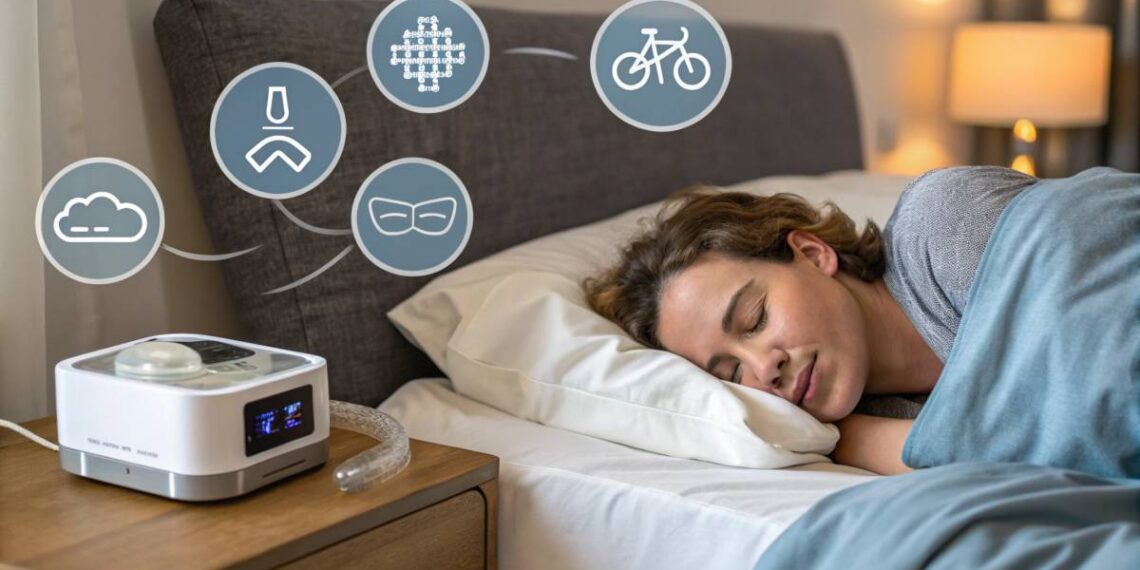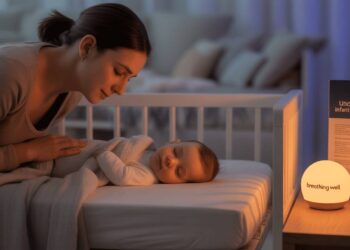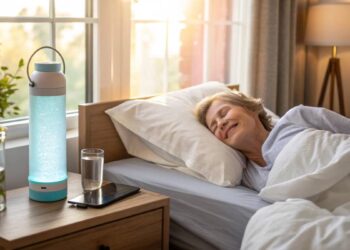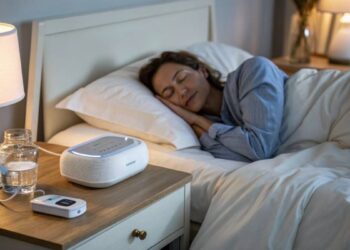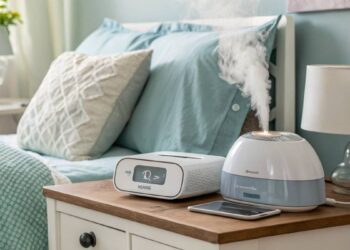Ever felt like a restless night is sabotaging your day? Sleep apnea might be the silent culprit disrupting your peaceful slumber and draining your energy. Imagine your sleep being constantly interrupted by unexpected breathing pauses, leaving you groggy and affecting your overall health. Whether it’s obstructive sleep apnea, where throat muscles take unexpected breaks, or central sleep apnea, where your brain misses the “breathe now” signal, understanding the nuances is crucial. Dive into our comprehensive guide to uncover the signs, symptoms, and effective treatments that can reclaim your nights and rejuvenate your days.
Key Takeaways
- Types of Sleep Apnea: Understand the difference between obstructive and central sleep apnea.
- Common Risk Factors: Identifies who is more likely to suffer from sleep apnea, including overweight individuals, those over 40, and post-menopausal women.
- Signs and Symptoms: Recognize the main indicators such as loud snoring, daytime sleepiness, and morning headaches.
- Testing Process: Learn how home sleep apnea tests work, including preparation, equipment usage, and returning the devices.
- Treatment Options: Explore various treatments including CPAP machines, mouth guards, lifestyle changes, and surgical options.
- Importance of Diagnosis: Highlights the health risks associated with untreated sleep apnea and the benefits of timely diagnosis and treatment.
Understanding Sleep Apnea
What is Sleep Apnea?
Sleep apnea’s like a tough love roommate, interrupting your ZZZs with unwelcome breathing pauses. These nightly disturbances happen way more than you’d think, messing with your sleep and health in ways you won’t enjoy. There are two main culprits here: obstructive sleep apnea, where the throat muscles hit snooze too much, and central sleep apnea, where the brain just forgets to send the “breathe now” memo. Want to sort out which is which? Swing by our article on central vs obstructive sleep apnea.
Folks more likely to meet ol’ Sleep Apnea include those carrying extra pounds, anyone over the ripe age of 40 with sleep woes, partners wanting earplugs for their snoring other half, big rig drivers needing that DOT tick, and ladies post-menopause.
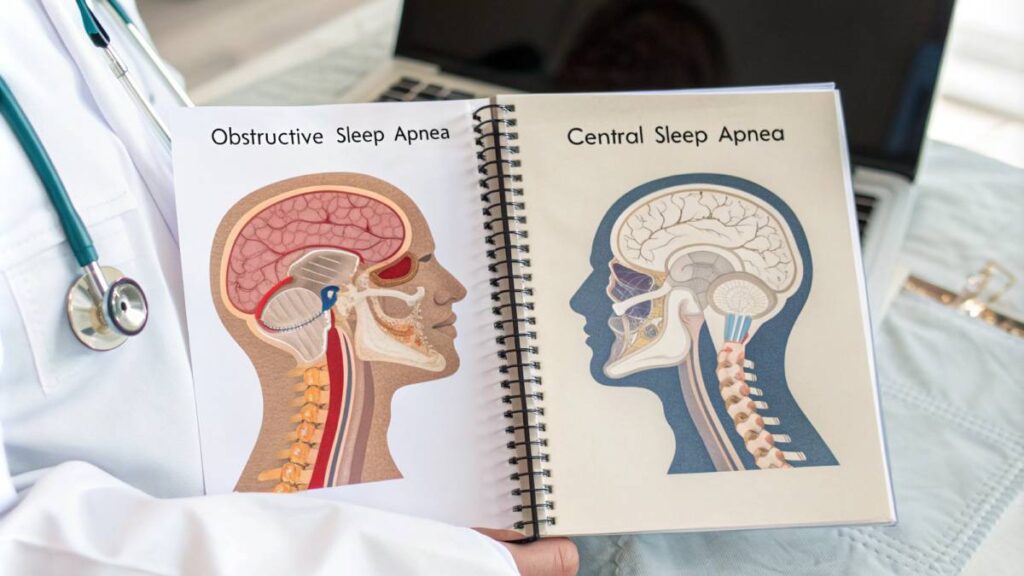
Signs and Symptoms of Sleep Apnea
Spotting sleep apnea’s like playing detective with your sleep. The clues might be different for everyone, but here’s your main suspect list:
| Symptom | Description |
|---|---|
| Loud Snoring | Usually your first hint, especially with obstructive sleep apnea. |
| Frequent Awakenings | Waking up several times a night, sometimes gasping for air. |
| Daytime Sleepiness | You’re dragging through the day even after logging a full night’s sleep. |
| Morning Headaches | If waking up feels like you had one drink too many, it might be to blame. |
| Difficulty Concentrating | Fuzzy brain? Your sleep might be the culprit. |
| Mood Changes | Irrability and mood swings showing up out of nowhere. |
| Dry Mouth | Cotton mouth in the mornings can mean you’ve been mouth-breathing all night long. |
Got concerns about little ones dealing with this nuisance? Understanding pediatric sleep apnea symptoms is a big help.
If you feel sleep apnea might be crashing your nightly party, consider a home sleep apnea test for a comfy diagnosis. Knowing what causes this snore-inducing mischief is half the battle, so check out our piece on what causes sleep apnea.
Importance of Diagnosis
The Risks of Untreated Sleep Apnea
Ignoring sleep apnea can cause a heap of trouble for your health and mess with your day-to-day life. Getting a grip on these risks might just give you the nudge to get things checked out and start some treatment.
“Proper diagnosis is the first step towards effective treatment, paving the way for healthier sleep and improved overall well-being.”
Let’s check out some potential bumps on the road when sleep apnea goes untreated:
| Health Risk | What’s the Deal? |
|---|---|
| Heart Stuff | Chances of high blood pressure, heart woes, and strokes go up. |
| Tired All Day | Constant tiredness making you less alert and more accident-prone. |
| Mood Swings | More likely to feel down, anxious, or just plain grumpy. |
| Metabolism Mishaps | Higher possibilities of diabetes and extra pounds thanks to hormone chaos. |
| Brain Fog | Memory lapses, hard time focusing, and struggles with simple tasks. |
Folks might also feel a dip in overall happiness, making it tough to stick to healthy habits. Wanna know more about the signs? Check out our article on sleep apnea symptoms.
Benefits of Identifying and Treating Sleep Apnea
Nailing down and handling sleep apnea can really jazz up your health and daily grind. Here’s what’s in store after sorting it all out:
| Benefit | Perks You’ll Love |
|---|---|
| Better Zzz’s | Deeper sleep leaving you ready to take on the day. |
| Sharper Focus | Easier to concentrate, remember stuff, and react faster in everyday moments. |
| Health Perks | Less chance of heart troubles, hypertension, and blood sugar spikes. |
| Level Mood | Fewer mood swings translating to better relationships and a happier life. |
| Easier on the Waistline | Weight’s simpler to manage with boosted metabolic health. |
Getting the right diagnosis opens doors to treatment, be it lifestyle tweaks, CPAP machines, or other paths. Dive into our articles on alternatives to CPAP and natural sleep apnea remedies for more scoop.
“Exploring different treatment options ensures that everyone can find a solution that fits their lifestyle and comfort.
Realizing sleep apnea’s impact is the ticket to snatching back those sweet dreams and bettering your health. If you’re curious about a home sleep apnea test, taking that step could be a game-changer for you.
Home Sleep Apnea Testing
Sorting out how to diagnose sleep apnea makes way for better treatment and restful nights. One option, the home sleep apnea test, lets folks check their snooze state without leaving their cozy beds.
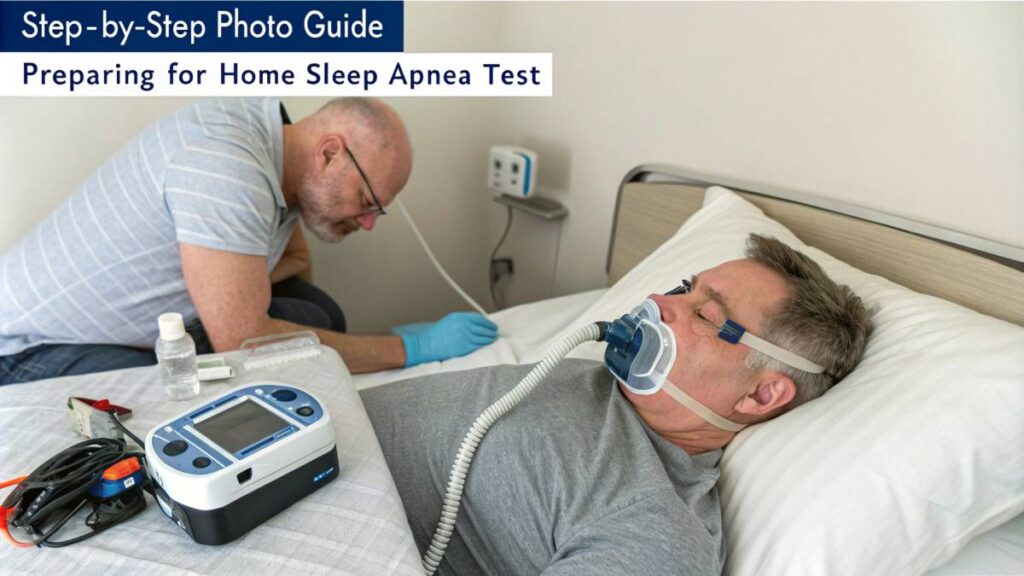
What is a Home Sleep Apnea Test?
Think of a home sleep apnea test as a smart gadget that checks how you breathe while you catch some Z’s. Unlike those tests where you snooze in a clinic (weird, right?), this one happens right in your bedroom, away from the clinic’s stiff sheets.
The test watches over a few key things:
| Measured Parameter | What It Does |
|---|---|
| Airflow | Keeps an eye on air streaming through your nose and mouth |
| Breathing Patterns | Tracks how quick or deep your breaths are |
| Blood Oxygen Levels | Checks your oxygen levels while you sleep |
| Heart Rate | Observes your heart ticking away during shut-eye |
This kit is perfect for folks a bit on the heavier side, anyone over 40 struggling with sleep, or those dealing with a partner bulldozing through the night with noisy snoring.
How Does Home Sleep Apnea Testing Work?
Getting the test going is a breeze, with hardly any need for tweezers or tape. It goes a little something like this:
- Preparation: Before the test, you might get told to skip on some meds or boozy drinks. Stick to the advice to keep the results on point.
- Equipment Setup: You’ll grab a neat little device with sensors. These piggyback on certain body parts, like jigging a wristband to your finger or strapping a belt to spot breath patterns.
- Sleeping with the Device: Once you’re strapped and snug, sleep as you do. The gadget gathers the night’s breathing tales, oxygen bits, and other juicy details.
- Returning the Equipment: After daybreak, hand back that trusty gear for a decoder’s showcase. A pro will then dissect the data to decide if sleep apnea’s pulling the strings, and just how much.
For the sleep-curious, a home test is a groovy jumpstart into the diagnosis pool. Decoding the results nudges folks towards treatment game plans, be it shifting a few habits or seeing a doc about that pesky central vs obstructive sleep apnea.
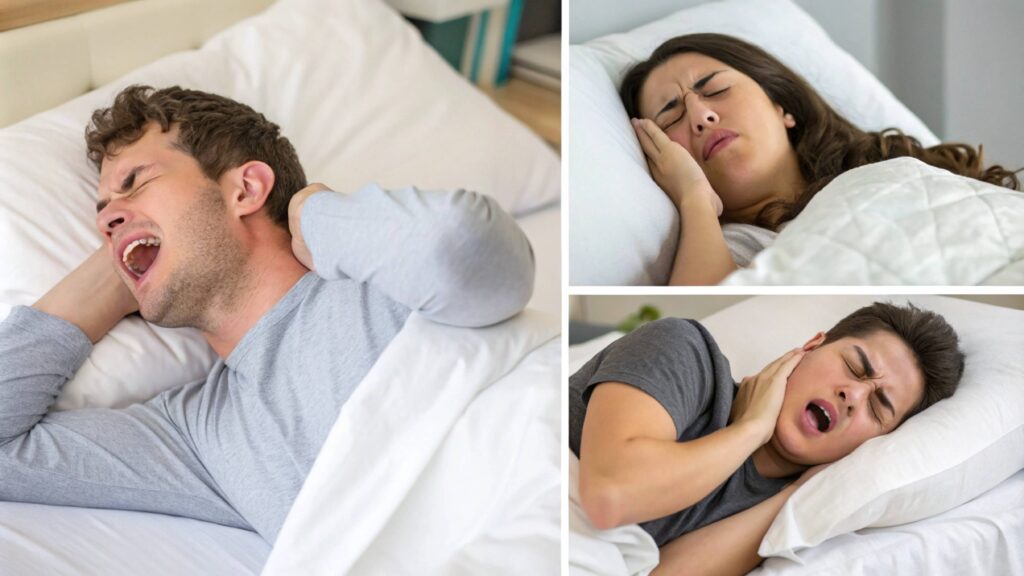
Who Should Consider Home Testing
Snore like a freight train? Feel tired even after a full night’s sleep? It might be time to consider a sleep apnea test. Home sleep apnea tests are convenient and can be a game-changer for folks with suspicions about their night-time breathing drama.
Overweight or Obese Individuals
Packing a few extra pounds? You’re not alone, but those love handles might be doing more than just dragging you down when you jog. There’s a strong link between being overweight and sleep apnea – all that extra tissue can mess with your airflow. Keeping an eye out for sleep apnea symptoms with a home test might just be the best sleepytime decision you make.
| Body Mass Index (BMI) Category | BMI Range |
|---|---|
| Normal Weight | 18.5 – 24.9 |
| Overweight | 25 – 29.9 |
| Obesity | 30 and above |
Individuals Over 40 with Sleep Issues
Once you hit the big 4-0, sleep apnea might want an invite to your slumber party. If getting some quality shut-eye feels like a distant memory and fatigue is your new best friend, a home test is a no-brainer. Stay on top of potential sleep enemies – early detection means fewer surprises.
Partners of Heavy Snorers
Got a partner who could make noise complaints at night? Loud snoring could be more than just an annoyance – it might be sleep apnea waving a red flag. Whether you want better sleep for them or a quieter night for yourself, a test could mend your nighttime symphony.
Commercial Drivers Needing DOT Certification
With safety checks the norm, commercial drivers are often required to prove they can keep their eyes open. Suspect you have sleep apnea? Home tests can fast-track the process to meet those Department of Transportation (DOT) standards without a hitch.
Individuals Resistant to CPAP Therapy
CPAP therapy – the lifesaver for sleep apnea patients. But what if you find it too cumbersome? No worries. Home tests help those looking for other options find alternatives that fit like a dream. Get pointed towards alternatives to CPAP that might suit you better.
Parents Concerned About Pediatric Sleep Apnea
Parents, when your kiddo’s snoring sounds louder than the last fireworks show, it’s time to act. Children could have sleep apnea too, and a home test geared towards kids could offer the answers you need. Check out possible signs through our pediatric sleep apnea symptoms guide.
Post-Menopausal Women
Menopause can throw a curveball at your sleep patterns. If you’re a post-menopausal woman facing sleep troubles, a home sleep apnea test might uncover hidden issues. Learn about what causes sleep apnea and score some peace of mind with the right steps to dreamland.
If some of this resonates, consider giving home testing a spin to keep sleep apnea from robbing your nights and fogging up your days.
The Testing Process
Getting checked for sleep apnea at home is super helpful to figure out why you’re not sleeping like a baby. Here’s the lowdown on how to prep for the test, use the gadgets involved, and get them back once you’re done snoozing away with them.
Preparing for the Test
Before diving into the world of sleep tests, you gotta get ready. Here’s what you should do:
- Chat It Up: Make an appointment with a healthcare pro to chat about what’s been keeping you up and what they need from you for the test.
- Get the Scoop: Go through the instructions your testing place gives you. Don’t just skim – know what’s what.
- Skip the Joe and Booze: Stay away from coffee and alcohol a whole day before you plug into the test kit. Those can mess with your zzzz’s big time.
- Pill Check: Talk to your doc about any meds you might wanna skip on test night so they don’t throw off your test results.
Using the Equipment
The big night arrives, and you’re strapping on some nifty gear to capture your night moves. Here’s the stuff you’ll be working with:
| Gadget | What It Does |
|---|---|
| Breath Tracker | Keeps an eye on your breathing pattern, watching out for hiccups or snores. |
| Oxy Checker | Checks how much oxygen is partying in your bloodstream while you catch Z’s. |
| Beat Meter | Watches your heart’s rhythm as you snooze. It’s like a DJ for your heartbeats! |
| Chest Band | Feels your chest move as you breathe in and out through the night. |
Make sure to hook up the gear according to the instructions. Get it snug but not so snug it bugs, cause you want to sleep like a log, not lie awake like a bump on a log.
Returning the Equipment
When dreaming’s done and the sun’s up, it’s time for the gadget send-off. Do this:
- Stick to the Plan: Follow what the sleep lab says about how to box it up and keep it safe on its journey back.
- Don’t Miss the Bus: Send it back when they ask, so the wizards of sleep science can do their magic and get you your results.
- Get a Nod: You might want to get proof you sent the stuff back, just to be sure all’s good.
Getting a grip on how this sleep test jazz works helps calm any jitters and could zap that mystery of why you snore like a bear. Want more snoop on the snore? Hop on over to our page on sleep apnea symptoms.
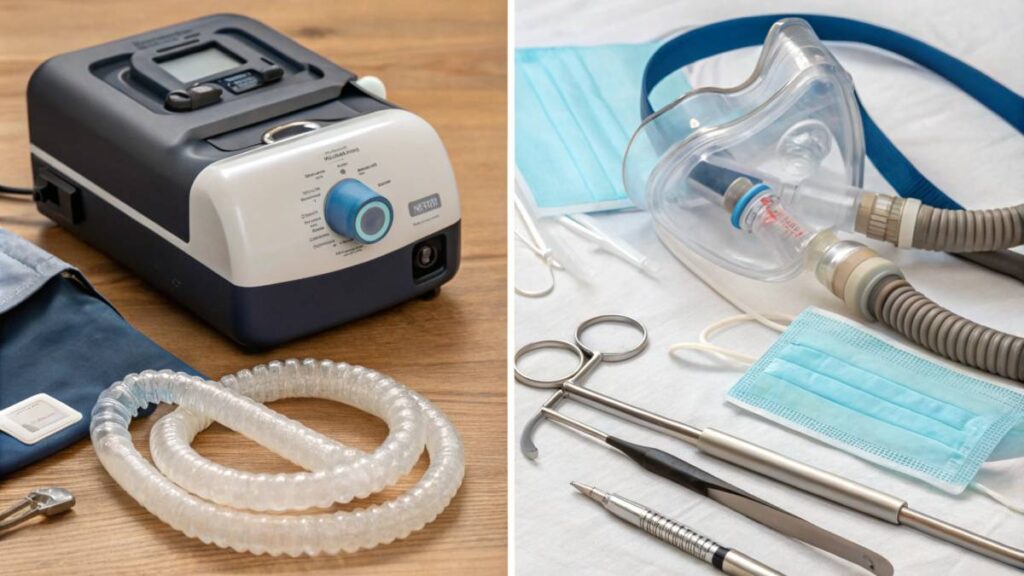
Understanding the Results
You’ve just finished your home sleep apnea test and might be wondering, “What now?” Let’s help you decode what these results mean and what to do next.
Interpreting Your Home Sleep Apnea Test Results
Your test results are more than just numbers—they’re insights into your sleep health. These results usually show measurements like the Apnea-Hypopnea Index (AHI), oxygen levels, and how often you’ve had those annoying disruptions in breathing.
Here’s a cheat sheet:
| AHI Score | Severity Level | What It Means |
|---|---|---|
| 0 – 5 | Normal | You’re in the clear |
| 5 – 15 | Mild Sleep Apnea | Potential issues—keep an eye out |
| 15 – 30 | Moderate Sleep Apnea | More serious, requires attention |
| 30+ | Severe Sleep Apnea | Major health risk, needs action |
So, a higher score means you’re playing on hard mode, and that’s not ideal. Your oxygen levels also play a part—the lower they are, the more your body might be struggling for breath.
If you’re curious about what causes all this, take a peek at our guide on sleep apnea causes.
Next Steps After Diagnosis
You’ve got your results, so what’s next on the agenda? Here’s a game plan:
- Consult a Doc: Set up a chat with your healthcare provider or a sleep expert. It’s a group effort—they need all the info to help tackle your sleep challenges.
- Check Out Treatment Choices: Based on how sleep apnea is playing out in your life, you might consider lifestyle tweaks, CPAP machines, fancy mouthguards, or maybe even surgery. Figure out the whole CPAP scene with our CPAP alternatives article.
- Make Lifestyle Tweaks: If you’re carrying some extra pounds, shedding them might just lighten your sleep woes. Explore more on this topic with weight loss and sleep apnea.
- Keep Tabs and Tweak: Stay vigilant about how you’re feeling and update your approach as needed. Your body knows the score—listen to it!
- Acknowledge Other Health Stuff: Often teamed up with other issues like heart woes, sleep apnea isn’t a solo act. For more info, read about sleep apnea and heart problems.
Getting a handle on your home sleep apnea test results is your ticket to better snoozes. With a plan in place and the right moves, you’re on your way to a restful night and a healthier life.
Looking for Ways to Handle Sleep Apnea
Once you find out that you’ve got sleep apnea from a home sleep apnea test, it’s time to check out different ways to tackle it. People react in their own way to treatments, from changing up their daily routine to trying out nifty gadgets or even surgery.
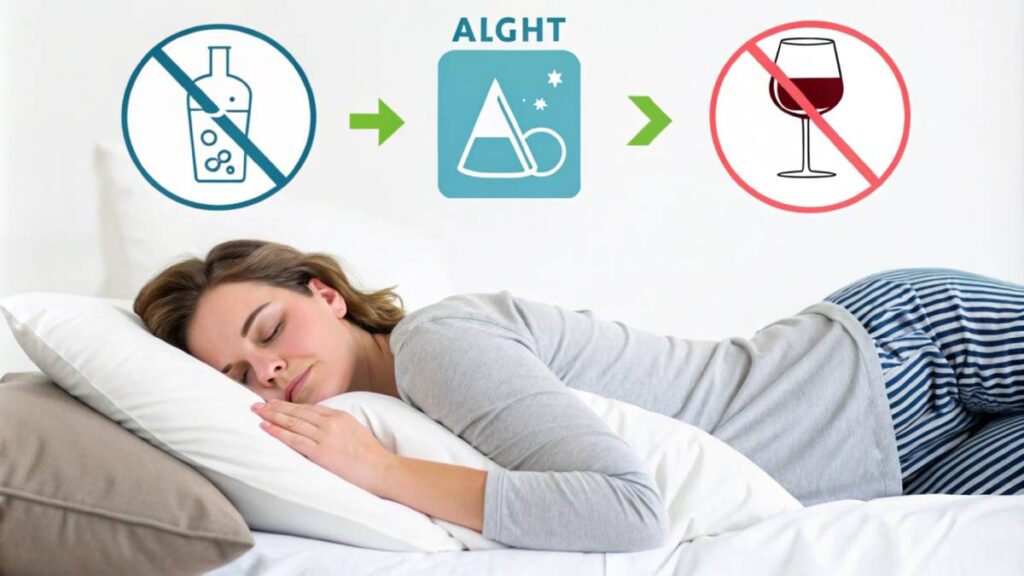
Little Life Tweaks
Changing some things in your life can make a big dent in how bad sleep apnea affects you. Here’s what might help:
- Lose Some Pounds: Shedding a few can actually ease up on those sleep apnea troubles. Even just a bit of weight loss can make your nights better. Curious? Check out the article about does weight loss help sleep apnea.
- Positioning When Snoozing: How you sleep can make sleep apnea worse. Many folks find rolling onto their side rather than lying flat on their back makes a difference. Get the scoop on great sleeping positions in our post on best sleep position sleep apnea.
- Skip the Booze and Chill Pills: Alcohol and sedatives can loosen the throat muscles, paving the way for blocked airways while catching Z’s.
| Lifestyle Tweak | Effect on Sleep Apnea |
|---|---|
| Drop Weight | Eases symptoms |
| Side Sleeping | Fewer apnea episodes |
| No Booze | Sleep gets better |
CPAP Machines
CPAP is like a trusty sidekick in fighting sleep apnea. You pop on a mask hooked up to a gizmo delivering air, stopping your airway from going kaput while you snooze. To have it work best, stick to it and learn how to keep things nice and clean. We have more on this in our article on how to clean cpap machine.
| CPAP Perks | What You Get |
|---|---|
| Steady Airflow | Keeps breathing route free |
| Mask Choices | Snug fit for all |
| Humidity Settings | Boosts comfort and cuts irritations |
Mouth Guards
These dental devices nip jaw and tongue movements in the bud, making sure airways stay open. They’re not as clunky as CPAPs and might be just the ticket for CPAP-resistant folks. Curious? Peek into our post on alternatives to cpap.
| Mouthpiece Plus Points | Things to Mull Over |
|---|---|
| Non-Surgical | Dental work needed |
| Handy to Travel With | Needs upkeep |
| Comfy for Many | Takes a spell to get used to |
Going the Surgery Route
When nothing seems to help, surgery might be on the table to clear or adjust any blockages in the breathing paths.
Common procedures involve:
- Snip Snip (UPPP): Clearing the extra stuff in the throat.
- Tongue Move: Shifting tongue muscle to avoid blocks.
- Jaw Realignment: Tweaking upper and lower jaw positions.
| Surgery Type | How Often it Works |
|---|---|
| UPPP | Hits or misses, 30-50% |
| Tongue Shift | Around 50-75% |
| Jaw Realignment | Depends on the person |
Every treatment has its pros and cons, so it’s wise to have a chat with a doctor about what’s best. Helping your sleep improves life all around. Need to help out a little one? Read up on pediatric sleep apnea symptoms.
Main Tips
- Maintain a Healthy Weight: Reducing excess weight can significantly alleviate sleep apnea symptoms.
- Optimize Sleep Position: Sleeping on your side can help keep airways open.
- Avoid Alcohol and Sedatives: These substances relax throat muscles, increasing the risk of airway blockage.
- Consistent Use of CPAP Machines: Ensure regular use and proper maintenance for effective results.
- Regular Medical Check-Ups: Monitor your condition and adjust treatments as necessary with professional guidance.
Final Thoughts
Sleep apnea is more than just occasional snoring—it’s a serious health condition that demands attention and action. By understanding its types, recognizing the symptoms, and exploring the array of available treatments, you can take meaningful steps towards better sleep and improved health. Whether it’s adopting lifestyle changes, utilizing medical devices, or considering surgical options, each approach offers unique benefits tailored to individual needs. Don’t let sleep apnea dictate the quality of your nights and the productivity of your days. Seek professional guidance, stay informed with trusted resources, and embrace a proactive mindset to manage sleep apnea effectively. Remember, reclaiming your restful nights is a vital investment in your overall well-being and longevity.
Conclusion
Addressing sleep apnea is not just about improving your sleep—it’s about enhancing your overall quality of life. From recognizing the early signs like loud snoring and daytime fatigue to understanding the different types of sleep apnea, each step plays a vital role in managing this condition effectively. Whether you opt for non-invasive treatments like CPAP machines and mouth guards or consider surgical interventions, taking proactive measures can significantly reduce the health risks associated with untreated sleep apnea, such as heart problems and impaired cognitive function. Additionally, lifestyle tweaks like weight loss and better sleep positioning can complement medical treatments, offering a holistic approach to better sleep. Don’t let sleep apnea steal your nights and drain your days. Seek professional advice, utilize available resources, and embark on a journey towards restful nights and energized days. With the right strategies and support, a healthier, more vibrant life is within reach.
FAQs
What is sleep apnea and how does it affect my health?
Sleep apnea is a disorder characterized by interrupted breathing during sleep, leading to poor sleep quality and increased risks of heart disease, high blood pressure, and daytime fatigue.
What are the main types of sleep apnea?
There are two primary types: obstructive sleep apnea, caused by throat muscle relaxation, and central sleep apnea, where the brain fails to signal breathing.
How is sleep apnea diagnosed?
Sleep apnea can be diagnosed through a home sleep apnea test or a comprehensive sleep study conducted in a sleep lab, involving monitoring of breathing patterns and other physiological functions.
What treatments are available for sleep apnea?
Treatments include CPAP machines, mouth guards, lifestyle changes such as weight loss and better sleep positioning, and surgical options to remove airway blockages.
Can lifestyle changes help manage sleep apnea?
Yes, lifestyle modifications like losing weight, avoiding alcohol and sedatives, and adjusting sleep positions can significantly reduce sleep apnea symptoms.

